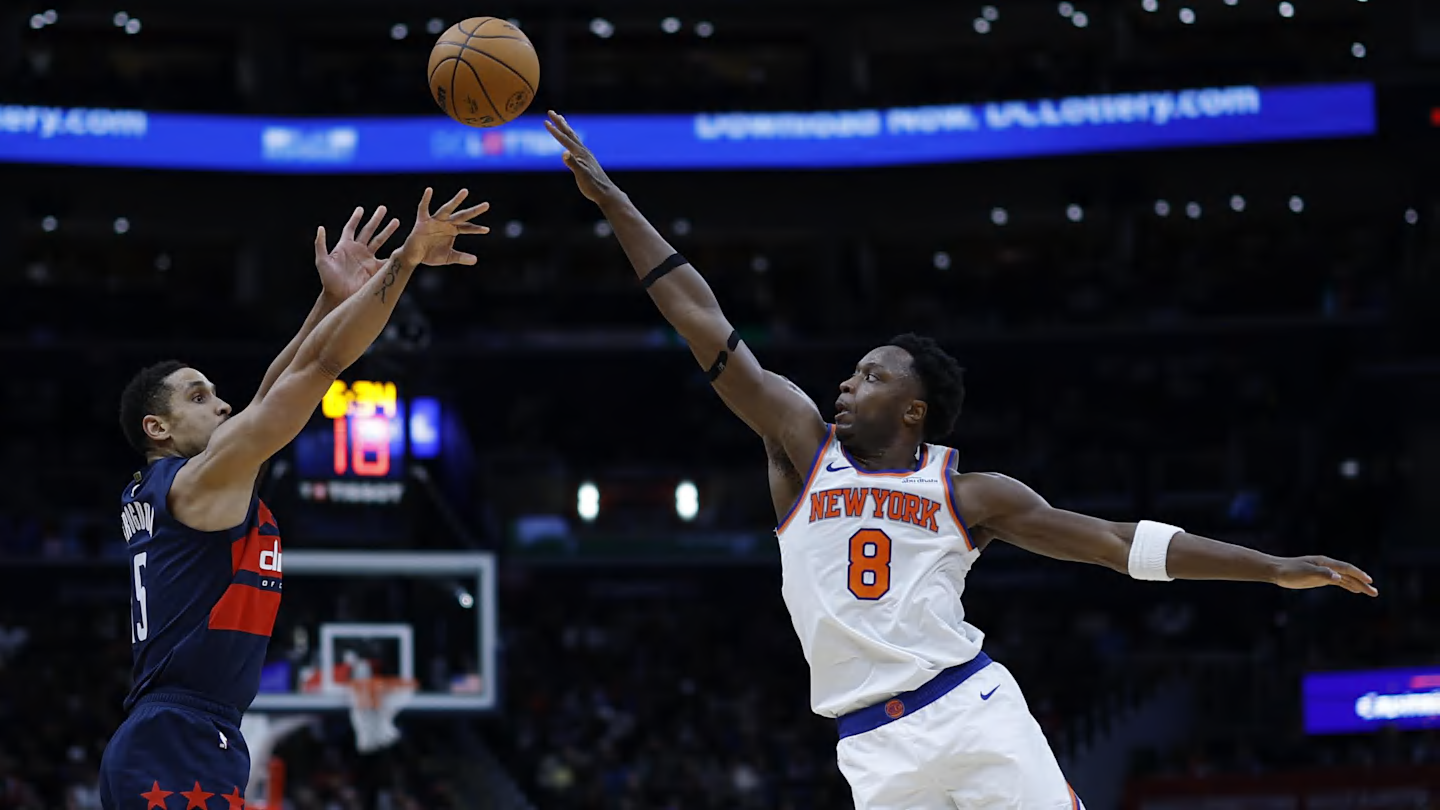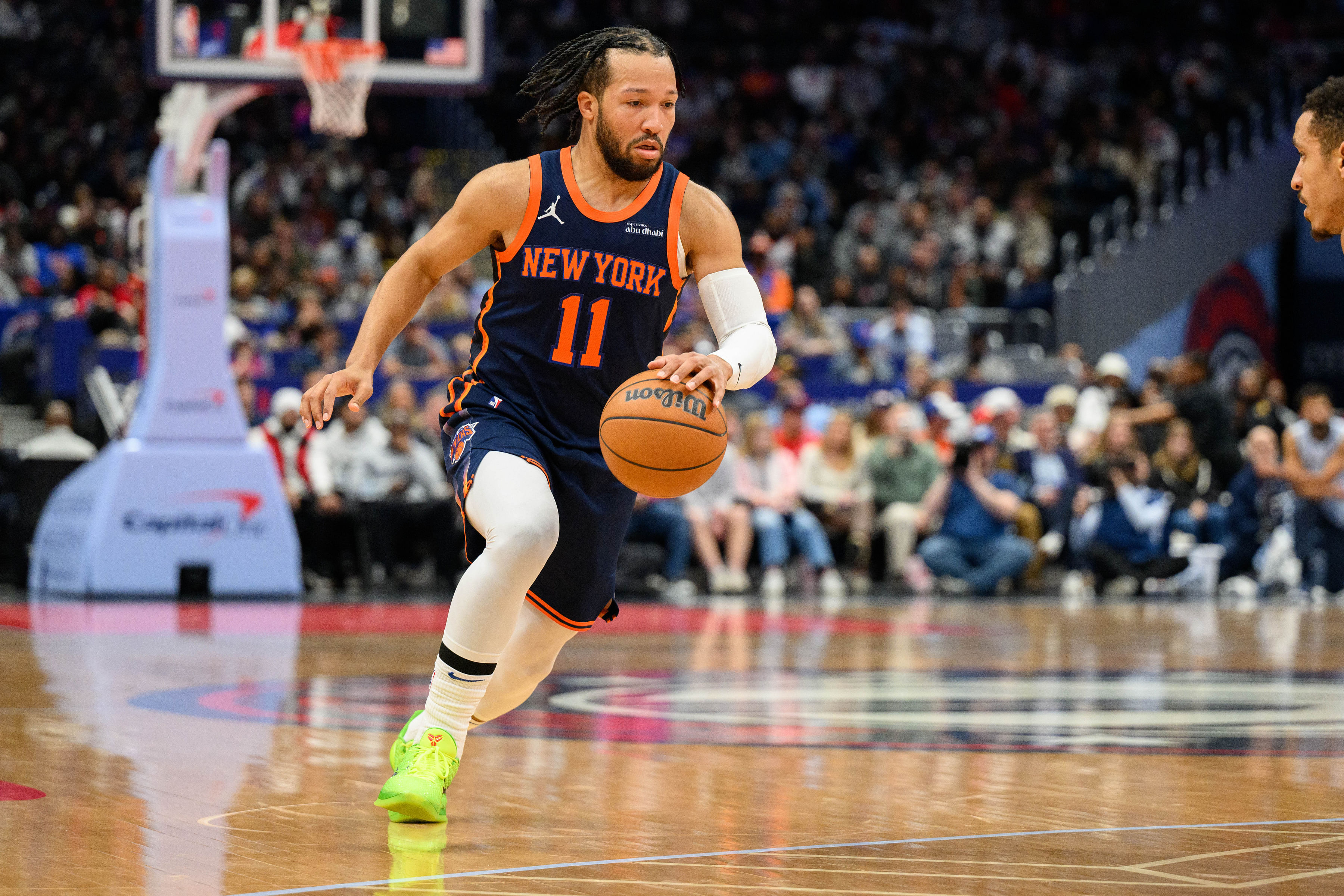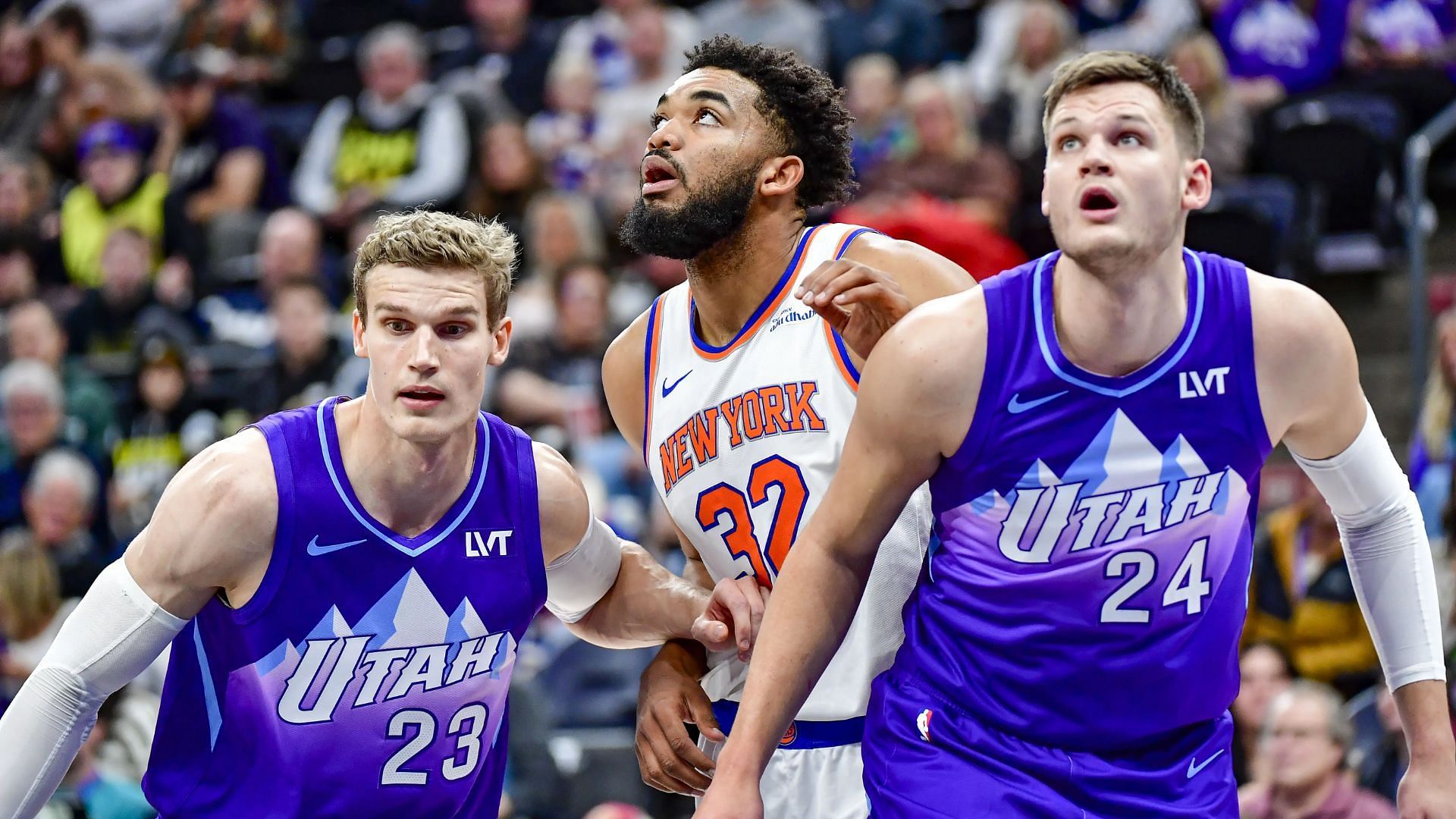NBA
Donovan Mitchell, Kenny Atkinson and the low-tech meeting that supercharged the Cavs

When Kenny Atkinson sat down for lunch with Donovan Mitchell inside the Four Seasons Westlake Village just outside of Los Angeles in late June, his mission was clear: Inspire enough trust and belief in the Cleveland Cavaliers’ franchise player that Mitchell would be compelled to sign a new contract rather than let the threat of free agency creep any closer.
The 57-year-old Atkinson was just days removed from signing his deal with the team, and the next item on the Cavs’ agenda was to ensure the team’s future. But in this NBA era where technology rules the day, with iPads on every coach’s bench and PowerPoint presentations an omnipresent part of the routine, this critical X’s and O’s session was as low-tech as they come.
“We were going over (Atkinson’s vision) with f—ing salt and pepper on the little place mat,” Mitchell told The Athletic recently. “This guy could be here and put this there. Naturally, what got me was the fact that we’re having this kind of discussion at a regular lunch. We’re legitimately trying to figure it all out, and we’re saying, ‘All right, we can plug this person here and where do we put this guy?’ Evan (Mobley) goes here, with the rifle action. He sets up this (action), and you can slip. We’re just going over everything.”
For more than an hour, none of the internal tension that had preceded Atkinson’s arrival — and which led to the firing of former coach J.B. Bickerstaff after the Cavs fell to the Boston Celtics in the Eastern Conference semifinals — mattered nearly as much as the question of whether these two men would click in this high-level basketball conversation. After all the angst in Cleveland last season — from the front office’s concerns about Mitchell playing too much to the well-known doubts about Bickerstaff in the locker room, big man Jarrett Allen’s longer-than-expected recovery from a rib injury in the playoffs, former All-Star guard Darius Garland possibly wanting to be traded and young Evan Mobley’s regression — this was their chance to chart a new, healthier path forward. But it would have to start with Atkinson and Mitchell.
Atkinson, the former Brooklyn Nets head coach who spent the previous four seasons as a Golden State assistant, didn’t know Mitchell well. They crossed paths briefly in 2017, when Mitchell worked out for Brooklyn leading into the draft during Atkinson’s time there, but were otherwise total strangers.
Not for long, though.
“I wanted it to be more casual than a chalkboard session,” Atkinson told The Athletic about his approach to the meeting. “I wanted his thoughts about how we’d play, thoughts on the team. I said, ‘Let’s go down the roster, and tell me about every guy.’ And it was amazing. It was like talking to a coach. He had such a depth of knowledge.
“He gave me the lowdown on every guy, so that was the spark for me. Like, man, I’ve got the blueprint right here, and then talking to him strategically about what we wanted to do. His IQ is off the charts — really off the charts. We just clicked, you know? Strategically. And that’s important. You could meet and not click. He bought in right off the bat.”
This was hardly a puff pitch, though. Atkinson, who beat out New Orleans associate head coach James Borrego and Minnesota lead assistant Micah Nori for the job, would be asking for Mitchell to sacrifice some of his responsibilities, and his playing time, for the sake of the greater good. This was, in essence, his first and best chance to sell Mitchell on a less-is-more strategy.
He wanted to minimize the 28-year-old’s minutes in an attempt to preserve his health for the playoffs. Atkinson envisioned a bigger playmaking role for Mobley in which he would become their version of the Warriors’ Draymond Green, thereby lowering Mitchell’s time with the ball, while also empowering Garland more as a playmaker. He wanted to install a motion offense that would steer clear of the more predictable pick-and-roll and isolation-heavy scheme from before, with constant cutting and crashing of the boards among the core principles. And Atkinson, whose NBA coaching influences include Rick Adelman, Mike D’Antoni, Mike Budenholzer and Steve Kerr during his NBA journey, opted to listen first before he laid out his vision.
The partnership began right then.
“It wasn’t hard,” Mitchell said of trusting Atkinson’s message. “It’s just different. I mean, this is a different approach to my year this year. Minutes are lower. Obviously, my averages are lower, so it’s all about being able to trust in him. When you have a guy like this saying, like, ‘This is what can take us (to the next level) …’ then it makes it easy.”
The importance of Mitchell’s part in the plan, and the crucial nature of his contract extension, can’t be overstated. Not only was the five-time All-Star at the center of their post-LeBron James plan that came together when they landed him from Utah in September 2022, but also the fact that he could be a free agent the following summer if he didn’t sign the extension meant their core might crumble if he didn’t re-up. And if Atkinson couldn’t find a way to truly connect with Mitchell, to inspire buy-in and a necessary bond they would all need by speaking his basketball language, then who knew what might come next.
Just days later, after their meeting that set such an important tone in this crucial Cavs relationship, Mitchell’s decision to ink a three-year, $150 million extension gave Cleveland the kind of extended chance at contention that few, if any, teams have in today’s luxury-tax laden game. The question now, with Mitchell and Atkinson’s relationship creating a bit of a butterfly effect, is whether these Cavs can live up to the early season hype and avoid the kind of anticlimactic ending that Mitchell knows all too well.
Once Mitchell’s deal was done, the moves toward a longer runway continued. Mobley signed a five-year, $224 million extension in late July. Allen signed his three-year, $90 million deal in early August. The core, at long last, was set. And now, with the Cavs a league-best 17-1 and all of the statistical signs pointing to them being truly special, Mitchell is ready to admit this much: After all the playoff heartache he’s endured during eight seasons, he’s allowing himself to get excited about the postseason possibilities again.
As Mitchell is painfully aware, there’s a different kind of pressure that comes with being an elite player who hasn’t made a deep playoff run or, better yet, won a title. He has made the playoffs seven times but has yet to reach a conference finals. There was plenty of premature positivity along the way.
His Utah Jazz had the league’s best record in the 2020-21 campaign (52-20), only to fall to the LA Clippers in the second round of the playoffs. Cleveland was 22-11 in his first season in town, finished 51-31, then fell in the first round to the New York Knicks (five games). Last season’s Cavs were 35-16 after a nine-game winning streak that ran through mid-February, only to go 13-18 down the stretch before the postseason arrived and the Celtics took them out.
You get the idea.
Still, these first five weeks have been nothing short of historic. Before their loss in Boston on Nov. 19, Cleveland had become just the fourth team all-time to start a season 15-0. The Cavs have the league’s best net rating, the best offensive rating and the 10th-best defensive rating. For this time of year, it doesn’t get much more impressive.
GO DEEPER
Lloyd: Assessing 8 incredible stats that define the Cavs’ remarkable 17-1 start
“I’m not gonna lie, I’m pretty excited,” Mitchell said. “When you sign somewhere, and when you commit to be somewhere. …”
He took a moment to gather his thoughts.
“I was confident this was going to happen, but did I think it was going to happen this year?” he asked. “I can’t say I thought it was going to just click right away. I’m not going to sit here and be like, Oh, yeah (I saw it coming). But that’s what makes it exciting. It’s like, ‘All right, this is everything I envisioned for this team. And it’s f—ing happening.’
“But now I make the joke, like, we screwed ourselves now, because now we know who we are. We showed who we are. So this is who we are. This is the barometer. This is the worst, in my eyes, and we haven’t even continued to grow. Evan is just starting to scratch the surface. DG (Garland) and myself are just continuing to get better. (Jarrett Allen). So there’s definitely some excitement, for sure.”
The mood change from seven months ago is quite stark.
By the time the Cavs’ season ended in Game 5 in Boston on May 15, the issues that led to the coaching change were impossible to ignore. The concern over Mitchell’s playing time appeared to be founded when a calf injury prohibited him from playing in the last two games against the Celtics.
The developmental delay with Mobley was a problem. And team sources say Garland, the 24-year-old former All-Star whose production declined last season while playing alongside Mitchell, had made it clear internally that he wasn’t content camping out in the corner. He wanted the freedom to be his best self, and to share a more equitable part of the offensive load with Mitchell in the backcourt. With Garland signed through the summer of 2028, Cavs officials believed putting him at ease was paramount. The choice to part ways with Bickerstaff and add Atkinson, in turn, was designed to provide the solutions to their many problems.

Donovan Mitchell and J.B. Bickerstaff discuss their next move during the Cavs’ playoff series against the Knicks in April 2023. (Jason Miller / Getty Images)
“I wanted the organization to make that (coaching) decision,” Mitchell said. “Obviously I know people probably think I f—ing did all of it, but at the end of the day, I trust in (Cavs general manager) Koby (Altman). I trust in the front office to be like, ‘All right, what’s the decision?’ And then you figure out what the future looks like.”
With Mitchell’s contract decision looming, he wanted clarity on the coaching front before making his final decision.
“Obviously it played a factor, just to figure out what’s going to happen,” he continued. “When we met before I signed in L.A., (Atkinson) basically told me, like, ‘Hey, this is the plan. We’re going to go into it with a plan, with intentionality.’ …Yeah, they came up with a plan. And my biggest thing is just following (the plan), and trusting it, and believing in it.”
Yet considering the indisputable connection between stats and stardom, and the reality that Atkinson’s ideas might make it harder to earn individual accolades, that part was easier said than done. Much to Mitchell’s chagrin, Atkinson proposed a light touch of load management designed to keep him healthier and fresher come playoff time.
But the results, from Mitchell and beyond, have only buoyed the confidence in Atkinson’s approach. While Mitchell’s minutes have gone from a team-high 35.3 per game last season to a team-high 31.2 this time around, he’s still producing at an All-Star-level rate (24.2 points, 4.4 rebounds, and 3.7 assists this season compared to 26.6 points, 5.1 rebounds and 6.1 assists last season). He even took a game off to rest recently, sitting Nov. 17 against Charlotte (a win) that was scheduled as an off day before the season began.
Meanwhile, Garland is producing at an even higher level on a per-minute basis than he was during his All-Star season in 2021-22 (31.6 points and 10.8 assists per 100 possessions this season compared to 29.7 points and 11.8 assists then). His minutes have also dropped, from 33.4 per to 30.1.
In Mitchell’s view, this early stretch of on-court synergy between them is the latest proof that this backcourt can be special for years to come. As for the uncomfortableness that came before when so many wondered if this backcourt might be broken up, Mitchell said the relationship they’d built during two seasons together served as a stabilizer of sorts.

GO DEEPER
Aldridge: Can a team of nice guys win an NBA title? Cavs aim to find out
“We always knew what we had as a friendship off the floor,” Mitchell said of Garland. “I think that’s when — excuse my language — sh– gets f—ing sticky. When you don’t have that relationship, there’s no trust.
“I let him take that time, because like I tell him, ‘We are fine.’ …I was like, ‘No, we’re good. Take the time you need.’ He had a lot of stuff going on last year, had a rough year (including a broken jaw that cost him six weeks midway through the season). I said, ‘Come back and be ready to roll.’ That’s it. At the end of the day, that’s going to shut all the sh– up. So for us, that’s really what it was, because you can’t control what the outside narrative is. It is what it is, and now he’s here hooping and that’s all that really matters at the end of the day.”
Yet if these Cavs find a way to reach the NBA’s promised land, winning it all after the summer of uncertainty that sparked all this dominance, it will all go back to the Four Seasons meeting in which Atkinson and Mitchell started building the foundation together. That’s where the trust began to build, and where Mitchell’s choice to give this group a longer look led to one of the league’s unlikeliest success stories.
“(Mitchell) is the one who told me, ‘Hey, our next step is empowering Evan,’ ” Atkinson said. “It wasn’t, ‘I need the ball more, or we need to run this for me.’ It was about, ‘How can this team make the next jump?’ And then he put Darius (in the conversation). He said, ‘Me and Darius can be great together. There’s no reason we can’t be great together.’
“So a lot of it came from him. He just had a good grip on where this team needs to go. That helped me steer the ship because I kind of got the blueprint.”
And a good meal, to boot.
“It was a nice lunch,” Atkinson said with a smile. “A really nice lunch.”
Sign up to get The Bounce, the essential NBA newsletter from Zach Harper and The Athletic staff, delivered free to your inbox.
(Illustration: Meech Robinson / The Athletic; photos: Barry Gossage / NBAE via Getty Images; Jonathan Bachman / Getty Images; Jason Miller / Getty Images)










